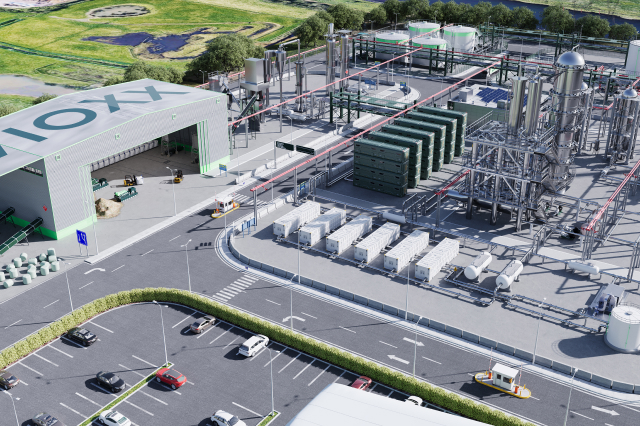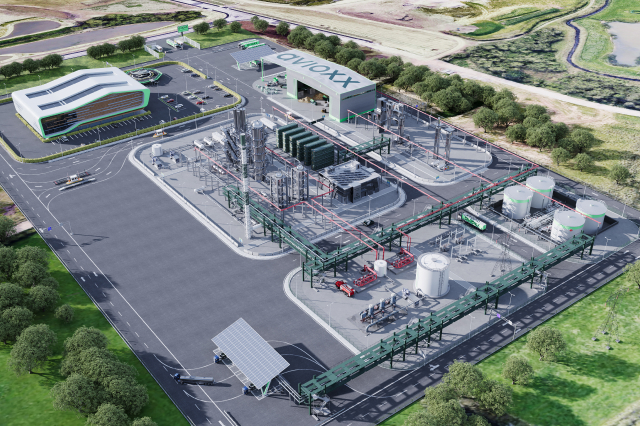The rising demands and shifting sources of global electricity

Electricity, essential to modern life, is generated from various sources, including fossil fuels, nuclear power, and renewables like wind, solar, hydro, and geothermal. Renewable sources are increasingly central to energy strategies worldwide, especially in the UK, which aims to meet ambitious climate targets and reduce dependency on imported fuels to meet growing electricity demands.
Fossil fuels, particularly coal and natural gas, have traditionally powered the world's electricity grids. However, the environmental impact of fossil fuel combustion — significant greenhouse gas emissions and air pollution — has pushed many countries, including the UK, to turn toward cleaner alternatives. In the UK, natural gas continues to play a role in electricity generation but has been significantly scaled down. For instance, in 2023, gas generation declined by 19% while coal’s contribution was a mere 1.3%. Just a few months ago, the UK’s last coal power station, Ratcliffe-on-Soar, shut down operations.
Renewable energy sources are varied, with wind, solar, hydro, and bioenergy each contributing differently based on geographic and environmental factors. Wind energy, for example, is especially efficient in regions with consistent wind patterns and has seen rapid adoption across countries like the U.S., China, and in parts of Europe, becoming the second most significant renewable electricity source. Wind is among the most abundant and effective power source in the UK, accounting for nearly 28% of the country’s electricity in 2023. It is particularly advantageous in the region due to its windy offshore conditions. Solar power is also growing in the UK, comprising close to 5% of total generation.

Nuclear power, while not renewable, is a stable low-carbon energy source that supplies about 10% of global electricity and over 13% of the UK’s electricity. Unlike fossil fuels, nuclear fission emits no carbon dioxide, making it an essential part of decarbonisation strategies worldwide. Nuclear power plants also have a high capacity factor, running at around 90% of maximum output which is significantly higher than intermittent energy sources like wind and solar, which average between 25% and 35%.
Hydropower is one of the most efficient sources of renewable energy, with efficiency rates often exceeding 90%, and it currently supplies about 16% of the world’s electricity. Widely used in regions with abundant rivers and reservoirs, such as China, Brazil, and Canada, hydropower is especially valuable for its consistent output and ability to meet peak energy demands. In the UK, hydropower plays a smaller but supportive role, contributing around 2% of the country’s electricity and helping to stabilise the grid alongside other renewables.
Geothermal energy provides a highly reliable source of power where volcanic or tectonic activity gives access to the heat naturally found beneath Earth’s surface. Iceland, for example, produces over 70% of their electricity from geothermal power. However, geothermal energy has geographical limitations and requires higher initial costs to build a power plant, thus it is less widely adopted compared to other renewables.
Demand projections and energy competition
As the world moves toward electrification, especially electric vehicles (EVs) and electric heat pumps, demand for electricity is projected to rise significantly. Combined with growing economies and the rise of AI and data centres, it is projected that global electricity demand will increase by 3.4% per year through 2026. In the UK, the transition to electric heating and EVs could potentially double current electricity demand by 2050. In both the UK and EU, policies setting requirements for jet fuel to contain minimum proportions made from sustainable sources, specifically targeting power-to-liquid fuels or e-fuels (i.e. synthetic fuel made using electricity, water and carbon dioxide), adds another growing pressure on electricity demand. Meeting the numerous demands for electricity will require rapid expansion of renewable capacity and enhanced grid infrastructure.
Competition for clean energy is becoming a central issue as nations move away from fossil fuels and toward electrification and low-carbon electricity generation. Due to technological advancements and economies of scale, renewable energy is generally becoming cheaper than fossil fuel-based power. However, in countries without stable renewable energy sources like hydro and geothermal, variability in energy output and reliance on fossil fuels to balance the grid introduce volatility to electricity prices.

Extracting energy from clean sources typically requires substantial upfront investment in infrastructure, technology, and grid adaptation. In addition, factors such as land use for solar farms, the need for sustainable water sources for hydropower, and the dependency on specific geographical conditions for wind pose challenges for expansion of renewable projects. Scaling up to meet projected demand will necessitate continued investment and innovation to ensure reliable supply to meet the expanding need for green electricity.
High demand, high prices
The growing energy demand and transition to green sources are driving up costs for consumers. In the UK, the wholesale price of electricity reached around £110 per MWh* in November, one of the highest in Europe. This is largely because the UK still generates about 32% of its electricity from natural gas, much of which is now imported due to declining domestic production. High and volatile natural gas import prices, compounded by carbon pricing and significant investments in renewable energy infrastructure and grid modernisation, have further increased electricity costs. In contrast, countries with abundant domestic renewable energy, such as Sweden, which generates 40% of its electricity from hydropower, saw prices of around £45 per MWh in the same month and as low as £11 per MWh in August.*
Taking e-fuels as an example highlights the need for expanding clean energy capacity and addressing electricity costs. They are energy-intensive to produce, requiring substantial inputs of clean electricity to meet carbon reduction goals, which makes their costs closely tied to electricity prices. Innovations like solid oxide fuel cells (SOFCs) offer a promising solution for liquid fuel production by generating electricity from household waste, eliminating reliance on external electricity and utilising a low-cost, abundant feedstock instead. This approach could reduce manufacturing costs, offering a more affordable pathway for scaling e-fuel production and supporting the transition to cleaner energy systems, particularly in regions like the UK.
The global trends toward AI, electrification of transport vehicles and heating, and the adoption of sustainable fuels are driving electricity demand to unprecedented levels. To meet this challenge, investments in clean energy infrastructure and a diversified energy mix are crucial for balancing reliability and affordability while cutting carbon emissions. High electricity costs, particularly in the UK, highlight the need for innovative solutions like producing e-fuels using solid oxide fuel cells, which can significantly lower production costs. Achieving a low-carbon future depends on resilient, adaptable, and affordable electricity to power an increasingly electrified world.
* Source: https://ember-energy.org/data/european-wholesale-electricity-price-data/



